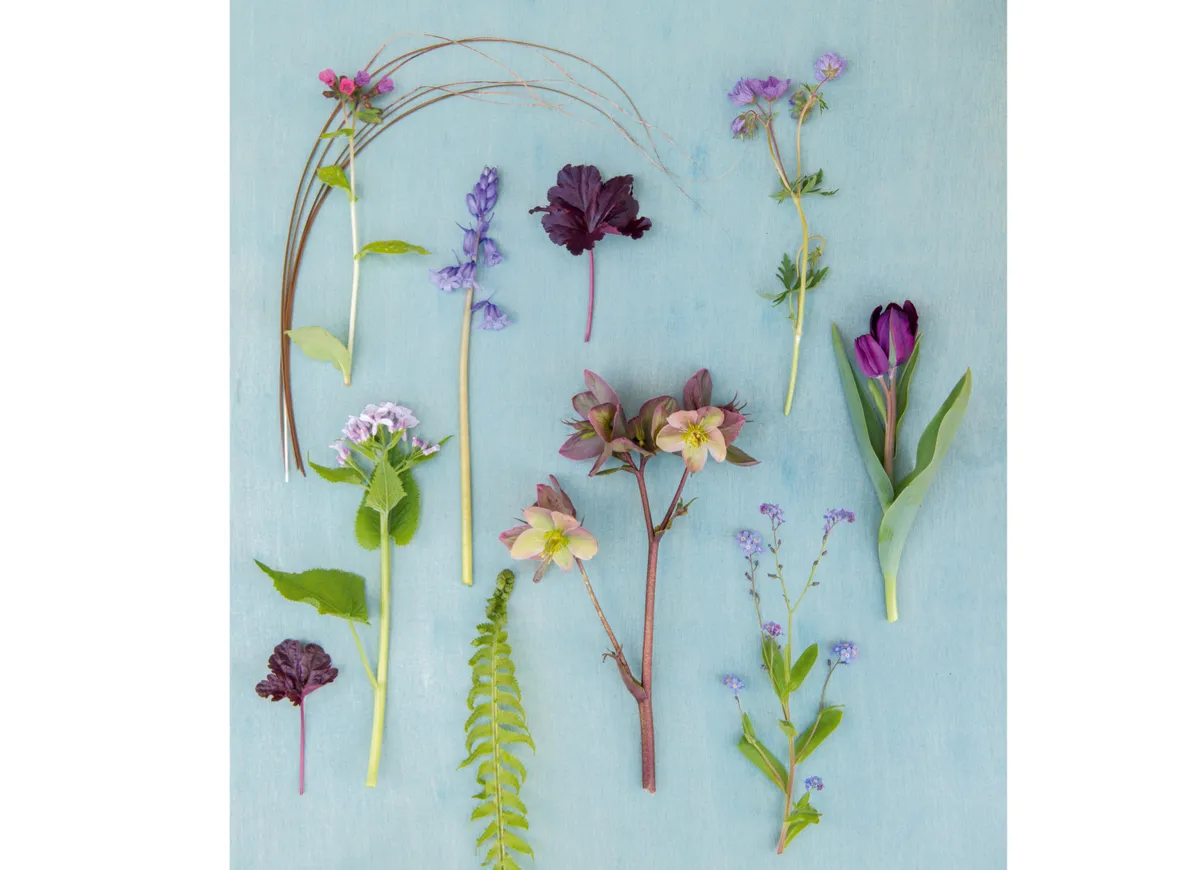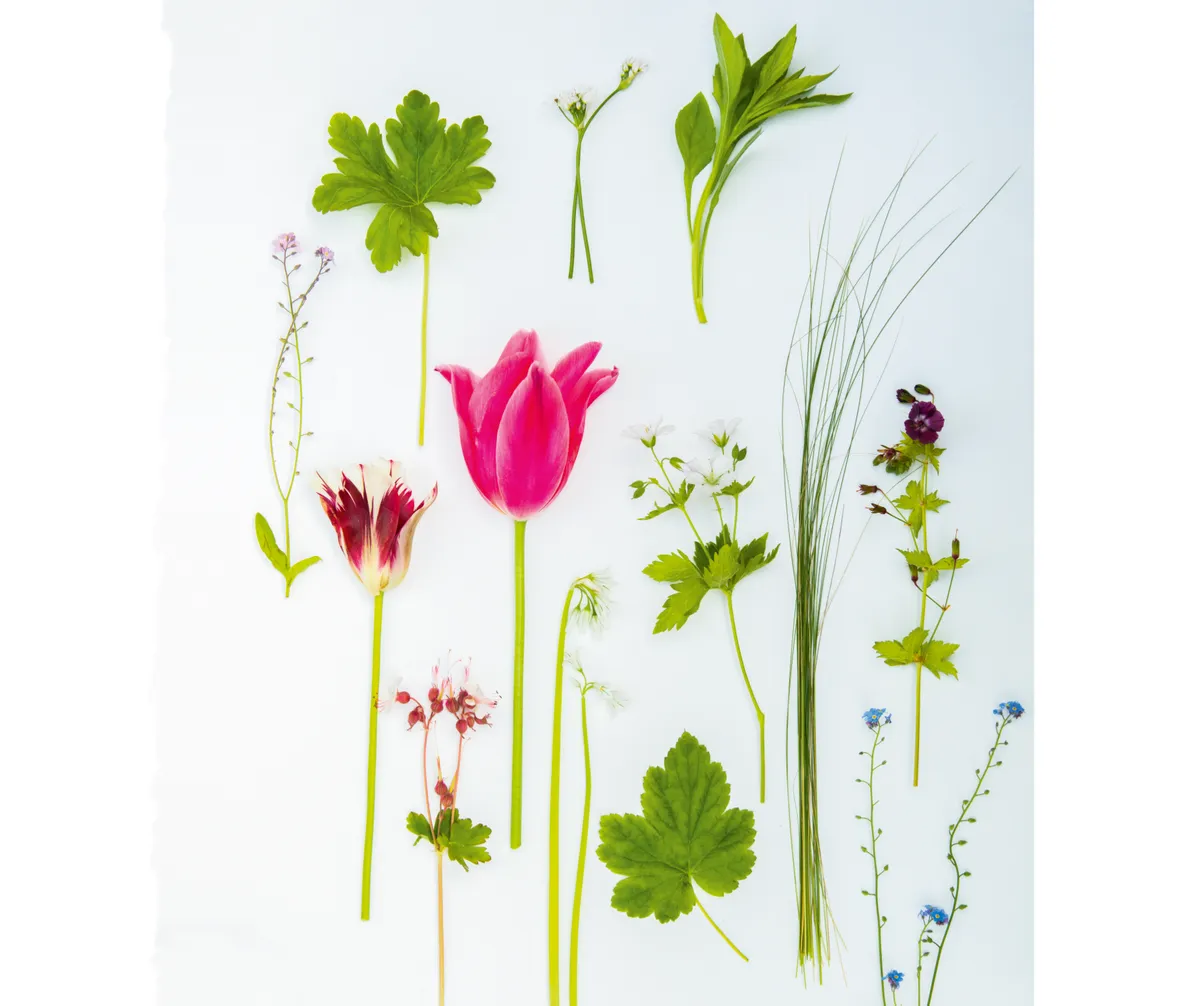Bulbs are the lifeblood of the border in the early part of the year. From February to early May, crocus, daffodils and tulips are the first signs that warmer days are approaching and after the emptiness of winter, the sight of them pushing through bare soil is a joy. There is an art to planting bulbs successfully, and if you're thinking about creating a spring border display using bulbs, you need to plant them in the autumn when the soil is still warm. As well as looking beautiful at the start of the year, bulbs look spectacular when combined with other plants and grasses. Below you'll find some useful tips on planting bulbs and four planting combinations for spring borders. And don't forget to download Gardens Illustrated's bulb planting design.
Wondering when to plant bulbs? Don't miss our guide
A guide on using spring bulbs in borders
- Order your bulbs early so you can ensure you get what you want.
- Plant at the right time. Snowdrops should not be planted later than early October. Smaller, early flowering bulbs, such as scilla and crocus, should be planted in the first half of October; daffodils in late October; tulips in November, when the soil is cold; and alliums in December.
- Plant in the right conditions. Tulips like well-drained soil and sun; daffodils can handle more moisture and shade.
- Let the style of the garden dictate your choice of bulbs. If it’s formal, Fritillaria imperialis would be a good choice, while a woodland area would suit bluebells.
- Sequence your plantings so they flower at different times: for example, crocus, muscari, tulips and scilla, daffodils, bluebells.
- Better to plant too deep than too shallow – at least 15cm is good for tulips.
- Better to order only a few cultivars in large quantities than a small number of many different cultivars.
- Invest in a bulb planter if you plan on planting a lot. They make it simpler to gauge depth and are easier on your back. Here are 9 excellent ones.
- Don’t worry too much about spacing. Catalogues will tell you to plant 10cm apart but I prefer a more natural look, scattering them and planting them where they fall. Tulips are strong and can grow through other plants without harming them.
- Don’t braid or remove the leaves or stems of tulips if you want them to naturalise.
Watch Troy Scott Smith on how to plant bulbs
Planting combinations for spring bulb borders from Dutch bulb expert and designer Jacqueline van der Kloet
Purple reign
The selection of plants below will give your border an elegant purple theme.

- Heuchera ‘Stormy Seas’ Easy to grow and good for dappled shade and containers. Height 50cm. Hardiness rating RHS H6, USDA 4a-9b.
- Lunaria rediviva Lovely flower followed by beautiful seedheads. Height 90cm. Hardiness rating RHS H7, USDA 5-8.
- Pulmonaria officinalis An easy plant that seeds everywhere in both sun and shade. Height 30cm. Hardiness rating RHS H6.
- Carex comans ‘Bronze Form’ Jacqueline values its ‘graceful performance’ and uses it in pots, where overhanging evergreen leaves ripple in the wind. Height 30cm. Hardiness rating RHS H4.
- Hyacinthoides hispanica The Spanish bluebell multiplies easily, even in the darkest shade. Height 40cm. Hardiness rating RHS H7, USDA 5a-8b. (NOTE: not suitable in the UK as the plant is invasive. British gardeners choose native species Hyacinthoides non-scripta as an alternative).
- Matteuccia struthiopteris A wonderful, rapidly spreading fern for damp, shady areas. Buds are edible. Height 1.5m. Hardiness RHS H4, USDA 2a-8b.
- Helleborus x ericsmithii ‘Pirouette’ Great colour and long flowering. Good for sun and dappled shade. Height 40cm. Hardiness rating USDA 5a-9b.
- Heuchera ‘Rachel’ A good, dark cultivar that goes well with Geranium macrorrhizum ‘Spessart’. Height 50cm. Hardiness rating RHS H6.
- Myosotis sylvatica Forget-me-knot seeds itself everywhere, but can easily be removed. A must alongside tulips. Height 30cm.
- Geranium tuberosum Finely cut leaves appear in winter, followed by striking flowers in spring. Needs a dry, sunny spot. Height 30cm. Hardiness RHS H4, USDA 6a-10b.
- Tulipa ‘Black Hero’ One of Jacqueline’s favourites. It perennialises well. Height 60cm.
Pretty pink display
Deep pink tulips are complimented by dainty perennials to create a bright, bubbly display that flowers from March through to May.

- Myosotis sylvatica ‘Rosea’ Charming alternative to the more common blue forget-me-not cultivars. Height 30cm.
- Tulipa ‘Flaming Springgreen’ Glorious viridiflora tulip. Looks good in the borders or as a cut flower. Height 45cm.
- Geranium. macrorrhizum ‘Spessart’ Beautifully scented leaves and delicate, pale-pink flowers. Good in shade. Height 50cm. Hardiness USDA 4a-9b.
- T. ‘Jacqueline’ Strong, tall, hot-pink cultivar that comes back year after year. Height 60cm.
- Allium neapolitanum Likes full sun where it will naturalise well. Height 40cm. Hardiness USDA 7a-9b.
- Allium triquetrum Be careful where you plant this three-corned leek as it can be very aggressive. Height 40cm.
- Leaves of Helleborus x hybridus Flowers from February to April but the leaves last all year. Height 45cm. Hardiness USDA 5a-9b.
- Geranium sylvaticum ‘Album’ Snow-white, saucer-shaped flowers that light up a shady area. Height 70cm. Hardiness RHS H7.
- Nassella tenuissima Upright, tufty grass that looks wonderful intermingled with perennials. Height 60cm. Hardiness RHS H4, USDA 7a-9b.
- Myosotis sylvatica. Forget-me-knot seeds itself everywhere, but can easily be removed. A must alongside tulips. Height 30cm.
- Geranium phaeum ‘Little Boy’ Lovely but beware that it can seed everywhere. Height 60cm.
Hot yellow tones
Tulips, buttercups and wallflowers hold the heat in this bold planting combination.

- Smyrnium perfoliatum A glorious yellow that seems to hold light within it. Height 1.2m
- Ranunculus psilostachys “Pretty but spreads terribly,” says Jacqueline. Height 35cm.
- Tulipa ‘Ballerina’ A gorgeous, rich orange contrasting well with its grey-green foliage. Height 60cm. Hardiness RHS H6.
- Erysimum ‘Spice Island’ A nice, bushy wallflower that is long flowering, sometimes from April–November. Prefers sun. Height 75cm.
- Hakonechloa macra Grass forming bright green hummocks that add movement to a border. Height 35cm. Hardiness USDA 5a-9b.
- Camassia leichtlinii ‘Sacajawea’ An unusual cream-coloured camassia with variegated leaves. Height 90cm. Hardiness USDA 3a-9b.
- Euphorbia griffithii ‘Fireglow’ A beautiful burnt orange colour, although fertile soils can allow it to grow tall when it can be prone to flopping. Height 1m. Hardiness RHS H7, USDA 5a-10b.
- T. ‘Jewel of Spring’ Luminous bowl-shaped yellow flowers. Height 60cm.
- Helleborus x hybridus Semi-evergreen perennial; tolerates partial shade. Height 50cm. Hardiness RHS H7, USDA 6a-9b.
Pale and interesting
If you prefer texture and interest over colour, this is the combination for you. Verdant foliage and cool whites are the stars of this show.

- Geranium macrorrhizum ‘Spessart’ Beautifully scented leaves and delicate, pale-pink flowers. Good in shade. Height 50cm. Hardiness USDA 4a-9b.
- Melica nutans A lovely early grass, but a vigorous self-seeder. Brown and cream flower spikes from late spring to summer. Height 50cm.
- Cardamine heptaphylla Produces clumps of lovely flowers in April. Height 30cm. Hardiness USDA 3a-8b.
- Rhododendron ‘Cunningham’s White’ Mauve buds open into white flowers. Jacqueline, has added ericaceous compost to her clay soil to provide the preferred acidic conditions. Height 2m. Hardiness RHS H6.
- Helleborus x hybridus seedling Flowers from February to April but the leaves last all year. Height 45cm. Hardiness USDA 5a-9b.
- Narcissus ‘Sailboat’ Very strong narcissus that naturalises well. Good for dappled shade. 30cm. RHS H6.
- Tulipa ‘Peppermintstick’ Lovely, elegant tulip. Give it a sunny, well-drained spot and it will perennialise well. Height 30cm. Hardiness RHS H6.
- Anthriscus sylvestris Large heads of tiny, creamy white flowers billow above delicate, fern-like foliage, adding airiness to the border. Height 1m. Hardiness RHS H5.
- Allium triquetrum Be careful where you plant this three-corned leek as it can be very aggressive. Height 40cm.